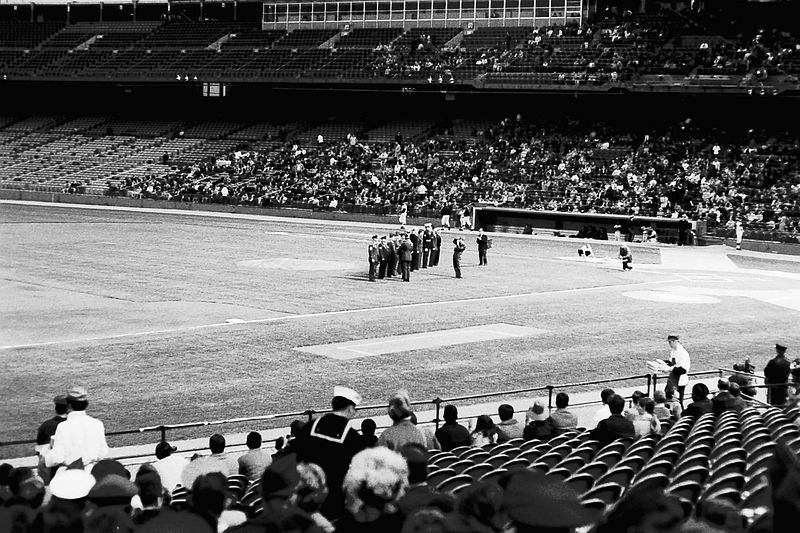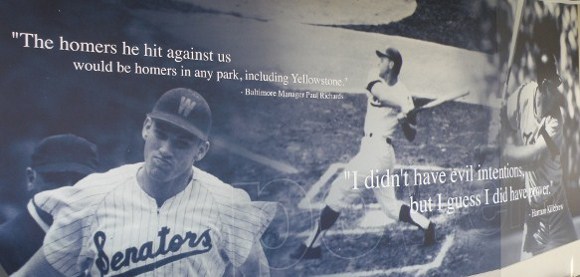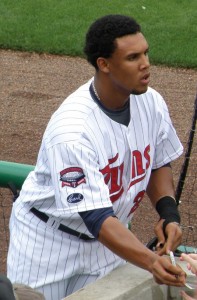Yesterday, I asked readers to endure a recitation of my childhood memories as I looked back at the most exciting Twins season in my memory, 1967. It was Rod Carew’s Rookie of the Year season and, while the Twins ultimately lost out to the Red Sox for the AL pennant, it was followed shortly by a couple of very successful seasons in 1969 and 1970 when Carew helped lead the Twins to the first two AL West Division championships.
Today, I’m going to discuss lessons that I believe should be learned from the years that followed those incredible seasons.
While Carew would never again reach the postseason with the Twins (and would never play in a World Series for anyone), he did have several more pretty amazing years with the Twins. He won six more batting titles to go with the one he won under Billy Martin in 1969. He won an MVP award in 1977, when he put up a 1.019 OPS (long before we knew what OPS was) for a 4th place team.

I missed most of that, though.
By the mid 1970s, I had pretty much tuned the Twins out. I wasn’t the only one, apparently. By 1974, the Twins were averaging just over 8,000 fans for their home games.
Twins owner Calvin Griffith could have gone one of two directions at that point. He had a couple of legitimate stars on his team, Carew and pitcher Bert Blyleven, both in the prime of their careers. He could have chosen to build a better team around them over the next couple of years and make an effort to compete. Charley Finley was starting to disassemble his powerhouse Athletics and the Seitz decision would soon set Andy Messersmith and Dave McNally free of their contracts and open the door to free agency. Griffith’s other option was to trade away Carew, Blyleven and anyone else who might command real money soon and attempt to rebuild his team with young (and inexpensive) prospects. Obviously, Griffith being Griffith, the latter was the only option with any chance of happening.
But what if Griffith had been willing and able to invest, rather than divest? Would the team have improved and brought fans back to the Met? Would the Twins then have been in a better position to command a new stadium of their own rather than being forced to share the Metrodome with the Vikings?
There’s no way to know, of course. What we can and do know, however, is that a lot of fans lost interest in the Twins during the mid to late 1970s. I was one of them.
As I think back through my 52 years of Twinsfandom, that era is probably the stretch when I was the least interested in what was going on with the Twins. I can only distinctly remember three trips to the Twin Cities to watch baseball from the time I graduated from high school in 1974 through the rest of the decade. I think about how many more times I would have watched two future Hall of Famers play baseball if only the owner had shown some kind of commitment to winning. It wasn’t until guys like Puckett, Gaetti, Hrbek and Brunansky developed in to a talented core in Minnesota in the mid 1980s that I got interested enough again to regularly drive up to the Twin Cities for games.
I believe that the people running the Twins now are flirting dangerously with the possibility of history repeating itself.
Those who advocate for the idea of blowing up the roster and rebuilding gradually with the highly touted group of prospects in the organization seem to think that letting the Twins continue to lose close to 100 games over the next year or two is a necessity. We’re told that, if we’re patient, the team will be much improved and be ready to compete by 2014 or 2015.
But do we really believe that Miguel Sano, Kyle Gibson, Eddie Rosario, Alex Meyer and Byron Buxton are going to be ready to win… not just contribute… at the Major League level by then? Maybe Griffith was planning on first round picks like Rick Sofield, Paul Croft and Lenny Faedo being ready to lead the Twins back in to contention by the late 70s, too. Instead, the Twins continued to play in front of more empty seats than filled seats at Met Stadium for several more years and continued to spiral deeper in to oblivion until they won only 60 games in 1982. Even the move to a new indoor stadium couldn’t significantly rebuild the fan base at that point.
What if we’re wrong about the next wave of uber-prospects being ready to seriously compete in the Big Leagues by 2015? What if it takes them longer? What if, like with Hrbek, Gaetti and Viola, this group loses big chunks of games for a few years even after they arrive in Minnesota and it’s 2019 or 2020… or later… before they reach their potential? That’s not exactly unlikely, is it?
The past two years have seemed hellish to Twins fans, but how many people will be watching Twins games at Target Field if the Twins go the better part of a decade or more during which coming even close to a .500 record is unlikely? How many will even be watching on television?
I wish I had watched Rod Carew play baseball more than a handful of times in the 1970s. How many young fans will grow old regretting not showing up to watch Joe Mauer play baseball in his prime because the team wouldn’t put enough talent around him to make a trip to the ballpark worthwhile? How long will it take to get those fans interested again?
Some people will tell us that Griffith had no other choice than the one he made… the advent of free agency was a paradigm shift that he could neither foresee nor afford financially to adapt to. That may be true. I have no way of knowing. But the advent of free agency clearly made owning and operating a competitive Major League Baseball team difficult for all but the wealthiest owners.
Today, I believe Major League Baseball is quite possibly nearing another era of potentially dramatic change in how the business is run. I don’t think any of us can predict, with any certainty, the state of television five years from now. It’s quite possible that it will be significantly different than it is today. The billion dollar media rights deals that large market teams are signing could create even more significant chasms between the “haves” and “have nots” in baseball than the eras of free agency and new stadiums did.
And what happens when cable operators and their subscribers (and potentially even the government) step up and refuse to allow continuance of an environment where subscribers must pay dramatically higher rates for cable television, driven almost solely by the cost of carrying sports programming? If that bubble bursts before teams in middle markets, like Minnesota, get their turn at the trough, the resulting competitive imbalance could last for a generation.
Those issues will have to be addressed by whoever baseball decides will succeed Bud Selig as Commissioner. But in the mean time, the people running the Twins have to be making long term plans for the continued financial viability of their franchise. They probably genuinely believed that a new stadium would allow them to field consistently competitive teams a few years ago when they were lobbying for public financing, but clearly Target Field no longer guarantees anything. MLB’s financial model appears to be taking another dramatic turn and a nice stadium is no longer enough to assure long term solvency, much less competitiveness.
As a result, I believe that the deeper the Twins allow this competitive hole they’re in to get, the greater the risk that we’ll see another 1970s-like loss of interest by the fan base that will simply perpetuate the problem.
I see it as imperative for the Twins to invest enough money in their roster to be competitive EVERY year if they’re going to remain a viable organization in to the future. They must keep fans coming to the ballpark and they absolutely need to make the team valuable enough to cash in on other media revenue streams sooner, rather than later. Doing otherwise risks dooming the franchise to being non-competitive until such time that large market teams finally agree to a more equitable business model… and we know that won’t happen any time soon.
Maybe I’m wrong. Maybe the next crop of kids coming up will hit the ground running and immediately capture the imagination and interest of Twins fans far and wide, leading to the next great golden era of Twins baseball, which will lead to vast riches for the Twins owners and secure the franchise’s future for generations to come.
I just think the odds of that happening are long… too long for the Twins front office to bet the organization’s future on it.
I was 14 years old when Rod Carew’s 1970 Twins won the AL West Division and I turned 31 before my favorite team gave me something to cheer about again in 1987. I hope it won’t be 2027 before kids who cheered on Joe Mauer’s 2010 Central Division Champions get to feel that excitement again.
– JC





